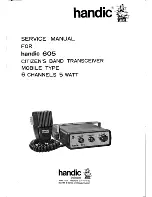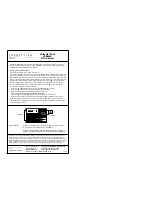
Page 37 of 90
CCT24
3.7 Power-On Reset Requirements
When applying power to the CCT24, the /RESET Pin 39 and the RADIO_TXD Pin 31 must be initially
held low. The /RESET pin must be held low until the power supply voltage reaches 3.3 volts for 100 ms,
and then set high. The RADIO_TXD must be held low an additional 10 ms after the /RESET pin goes
high. RADIO_TXD is weakly pulled down with a 100K ohm resistor to meet the power-on reset require-
ment, unless this line is driven high by an external signal.
3.8 Mounting and Enclosures
CCT24 modules are mounted by plugging their pins into a set of mating connectors on the host circuit
board. Refer to Section 8.3 and/or the CCT24 Data Sheet for CCT24 connector details.
CCT24 enclosures must be made of plastics or other materials with low RF attenuation to avoid compro-
mising antenna performance where antennas are internal to the enclosure. Metal enclosures are not
suitable for use with internal antennas as they will block antenna radiation and reception. Outdoor enclo-
sures must be water tight, such as a NEMA 4X enclosure.
3.9 Labeling and Notices
Labeling:
A clearly visible label is required on the outside of the user’s (OEM) enclosure stating the following:
”Contains FCC ID: HSW-CCT24”
”Contains IC: 4492A-CCT24”
Notices:
WARNING: This device operates under Part 15 of the FCC rules. Any modification to this device, not
expressly authorized by RFM, Inc., may void the user’s authority to operate this device.
FCC NOTICE: This device complies with Part 15 of the FCC rules. Operation is subject to the following
two conditions: (1) this device may not cause harmful interference, and (2) this device must accept any
interference received, including interference that may cause undesired operation.
IC Notice - This device complies with Industry Canada licence-exempt RSS standard(s). Operation is
subject to the following two conditions: (1) this device may not cause interference, and (2) this device
must accept any interference, including interference that may cause undesired operation of the device.
Le présent appareil est conforme aux CNR d’Industrie Canada applicables aux appareils radio
exempts de licence. L’exploitation est autorisée aux deux conditions suivantes : (1) l’appareil ne
doit pas produire de brouillage, et (2) l’utilisateur de l’appareil doit accepter tout brouillage
radioélectrique subi, même si le brouillage est susceptible d’en compromettre le fonctionnement.
Under Industry Canada regulations, this radio transmitter may only operate using an antenna of a type
and maximum (or lesser) gain approved for the transmitter by Industry Canada. To reduce potential radio
















































